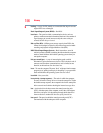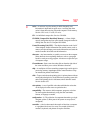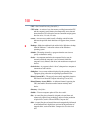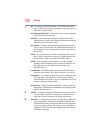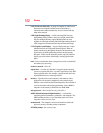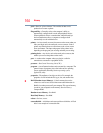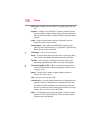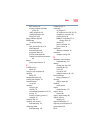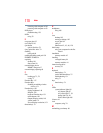
Glossary
163
multi-function drive—A DVD drive that can read and write to CD and
DVD media.
multimedia—A combination of two or more media, such as sound,
animation, and video in a computer program or presentation.
Musical Instrument Digital Interface—See MIDI.
N
network—A collection of computers and associated devices that are
connected by communications facilities. A network allows you to
share data and peripheral devices, such as printers, with other users
and to exchange electronic mail.
non-interlaced—A method of refreshing a computer screen, in which
each pixel of every line is refreshed as the electron beam scans
across and down the screen. Compare interlaced.
non-system disk—A disk for storing programs and data that cannot be
used to start the computer. Compare system disk.
O
online—Available through the computer. Online may refer to
information being read from your own computer’s internal storage
drive, such as online documentation or online Help, or to
information coming from another company on a company network
or the Internet.
operating system—A set of programs that controls how the computer
works. Examples of operating systems are the Windows Vista
®
,
Windows
®
7, and Windows 8 operating systems.
optical disc drive—A drive which reads plastic coated discs on which
information is recorded digitally, and uses a laser to read data,
music, or videos.
P
palette—See color palette.
password—A unique string of characters entered by a user to verify his
or her identity to the computer or the network.
PC Card—A credit-card-sized expansion card designed to increase the
capabilities of computers. PC Cards provide functions such as
modem, fax/modem, hard disk drive, network adapter, sound card,
or SCSI adapter.
peripheral—Any device, such as a printer or joystick, that is attached to
the computer and controlled by the computer’s CPU.




